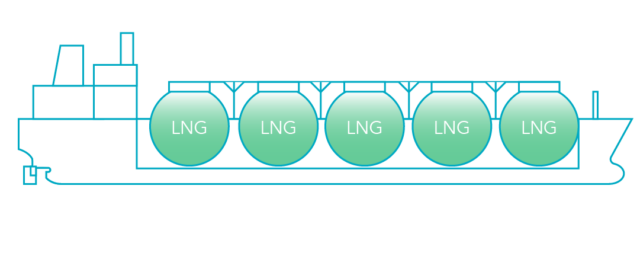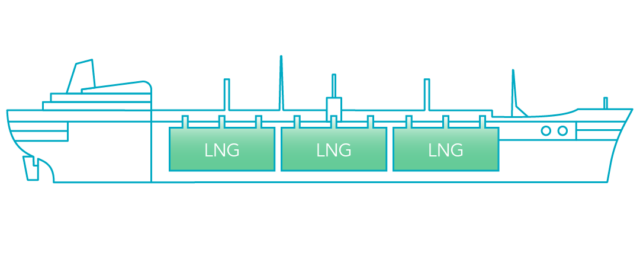
LNG & Marine Shipping
#clearfacts #LNG #marinesafety
Worldwide, the demand for natural gas is increasing. As a result, a number of liquefied natural gas (LNG) export terminals are proposed or in progress in Canada. Both the amount of LNG transported by ship and the number of ships fuelled by LNG are expected to increase in Canadian waters.
Although the transport and use of LNG by ship are not without risks, measures taken to reduce those risks have resulted in the safe transport of LNG by ship for the past sixty years.
This site’s purpose is to share objective information about the use of LNG as a cargo and fuel source for the marine shipping industry – including the benefits and risks of LNG use and carriage, and what’s being done to reduce those risks – and to encourage informed conversations about these issues.
This site was created by Clear Seas Centre for Responsible Marine Shipping, an independent research centre that supports safe and sustainable marine shipping in Canada.
About Natural Gas
Natural gas is a naturally occurring flammable hydrocarbon used extensively as a fuel.
Once extracted from the ground, natural gas is processed to remove components such as:[1]

Hydrogen Sulphide

Nitrogen
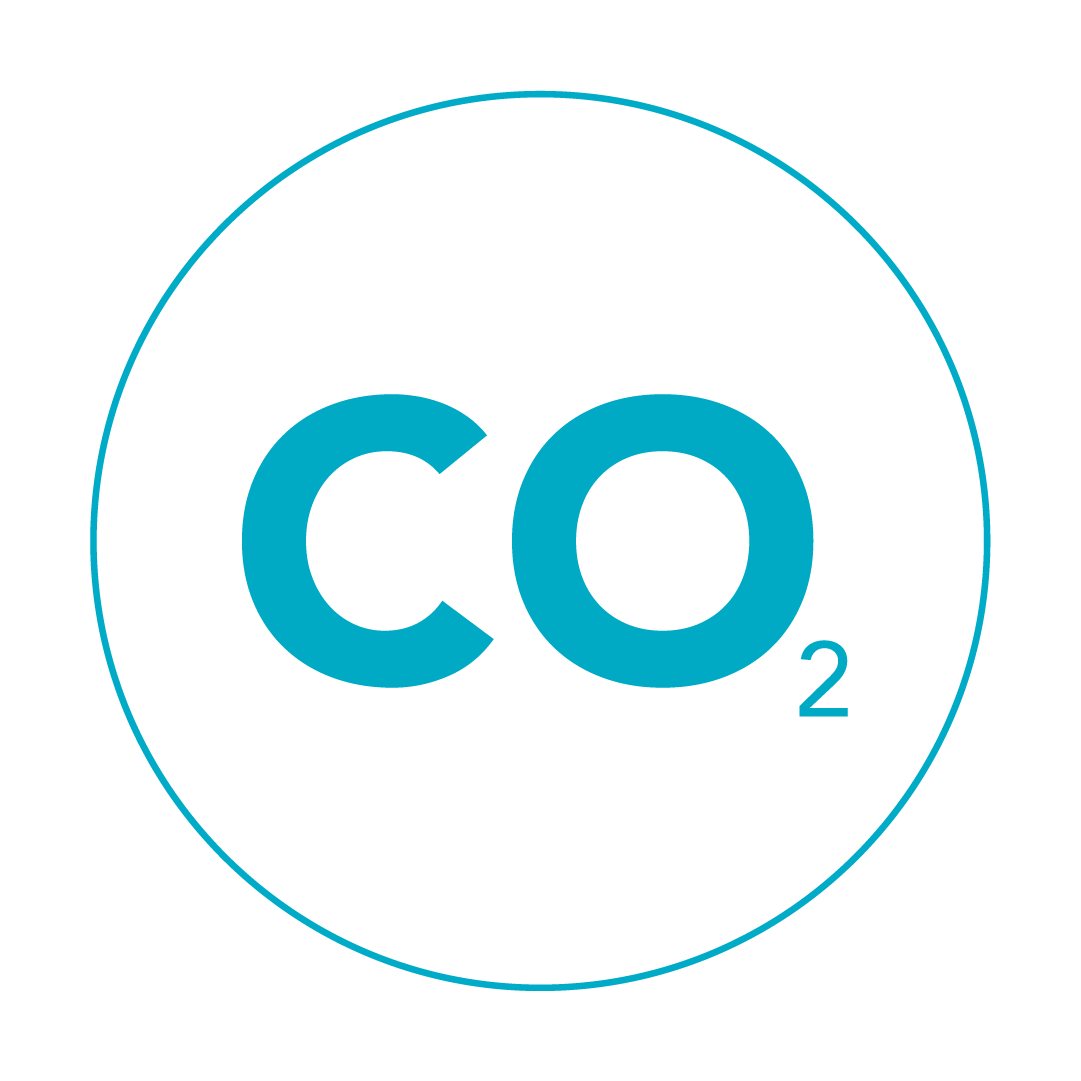
Carbon Dioxide

Water

Butane

Ethane

Propane
Refined natural gas, which is mainly methane, is transported by pipeline to population centres for industrial, commercial and residential use, primarily:

Electricity

Transportation

Cooling

Heating
For transport by ship, natural gas must first be cooled to a liquid to significantly reduce its volume. Known as LNG, it requires 600 times less space while kept at -160°C[3] and near atmospheric pressure[4] for efficient transport over long distances.

Natural Gas Emissions
Natural gas emits significantly fewer air pollutants than most other fuels and is non-corrosive and non-toxic.[5]
Natural gas is viewed by many as an abundant, cost-effective and cleaner fuel and is expected to overtake coal and become the second leading source of energy worldwide – behind oil – by 2040.[6]
Common Pollutants: SOx, NOx and Particulate Matter
Compared to conventional fuels such as coal, heavy fuel oil, diesel and gasoline, the combustion of natural gas produces 85-90% less sulphur oxides (SOx) and particulate matter and 35-85% less nitrogen oxides (NOx), depending on engine type.[7][8] With increasingly strict air pollution regulations in effect in many areas around the world, replacing other fuels with LNG will improve air quality and reduce harm to human health and the environment.
Greenhouse Gas Emissions
Estimates of the potential reduction in climate change effects by adopting natural gas as a fuel vary widely. Determining the overall impact on climate change requires consideration of the various greenhouse gases released throughout the supply chain, from natural gas’s extraction from the ground to its combustion in an engine.
When burned, natural gas produces an average of 15% to 29% less carbon dioxide than conventional fuels.[9][10] The actual value is dependent on the source of the gas and the conventional fuel being compared. For example, natural gas produces approximately half as much carbon dioxide as coal does during combustion.[11]
These apparent benefits of natural gas combustion are reduced by the impacts of:
Lifecycle emissions
Different methods to extract, process and transport natural gas produce different amounts of carbon dioxide.[12]
Methane slip
Releasing natural gas (methane) inadvertently into the atmosphere through leaks during handling or transport or due to incomplete combustion has up to 25 times the climate warming effect of carbon dioxide.[13]
For instance, the lifecycle greenhouse gas emissions of LNG are estimated to be 6% to 10% less than emissions from heavy fuel oil, which is currently the most commonly used shipping fuel.[14] Some studies report even less or no benefit, depending on the amount of methane slip that occurs. The range depends on efficiencies in production, transport and handling to reach the end user, and the types and efficiencies of ship engines used. By using efficient engines, careful LNG transfer procedures, and education and training, the amount of methane slip that occurs during ship refuelling and operating can be significantly reduced, increasing the benefit from using LNG as a marine fuel.
Fuel lifecycle climate warming impact
When comparing the CO2-equivalent emissions of different fuels per 1 tonne of cargo transported 1 km by ship, the total climate warming impact of LNG exceeds that of heavy fuel oil when the amount of methane slip from LNG use is greater than approximately 1% of the volume of LNG.[15]

Research is underway to reduce the climate change impacts of natural gas use by identifying ways to prevent methane slip and also integrating renewable gas sources such as biomass into the supply.
Natural Gas in Canada
Canada was the fourth largest producer of natural gas in the world with 5% of global production in 2017.[16] Approximately half of Canadian natural gas is exported by pipeline within North America, for a net value of $6.7 billion in 2017.[17]
In response to the increasing demand for natural gas around the world, a number of LNG export terminals have been proposed in Canada to move natural gas to overseas markets.
A total of 18 LNG export facilities have been proposed in Canada:

British Columbia

Quebec

Nova Scotia
Combined, these terminals have a total proposed export capacity of 87.5 million cubic metres per year of LNG.[18] Transporting this volume of LNG to overseas markets would require LNG carriers to make approximately 330 trips per year.

Approximately
330
LNG Carrier Trips
Canada has two LNG facilities currently in operation:
Canaport LNG
Canaport LNG at the Port of Saint John, New Brunswick has been importing LNG from overseas, storing it, and returning it to natural gas to supply the North American pipeline grid since 2009.
Tilbury LNG
Tilbury LNG plant in Delta, British Columbia has been liquefying natural gas since 1971 for local use. A recent expansion and supply agreement has made Tilbury LNG the first facility regularly exporting LNG to China, using shipping containers to transport the LNG.[19]
LNG as a Marine Cargo
The number of LNG carriers in operation is increasing with over 525 vessels worldwide in 2018. A single LNG carrier can transport enough energy to heat the homes of approximately half the population of Saint John, New Brunswick for a year.[21][22]
LNG Carrier
Saint John, New Brunswick
Transporting natural gas as a marine cargo requires a number of steps:[23]

Gas Field
Gas is extracted from the ground and processed to remove impurities and other gases

Pipeline
Gas is transported to population centres and export terminals
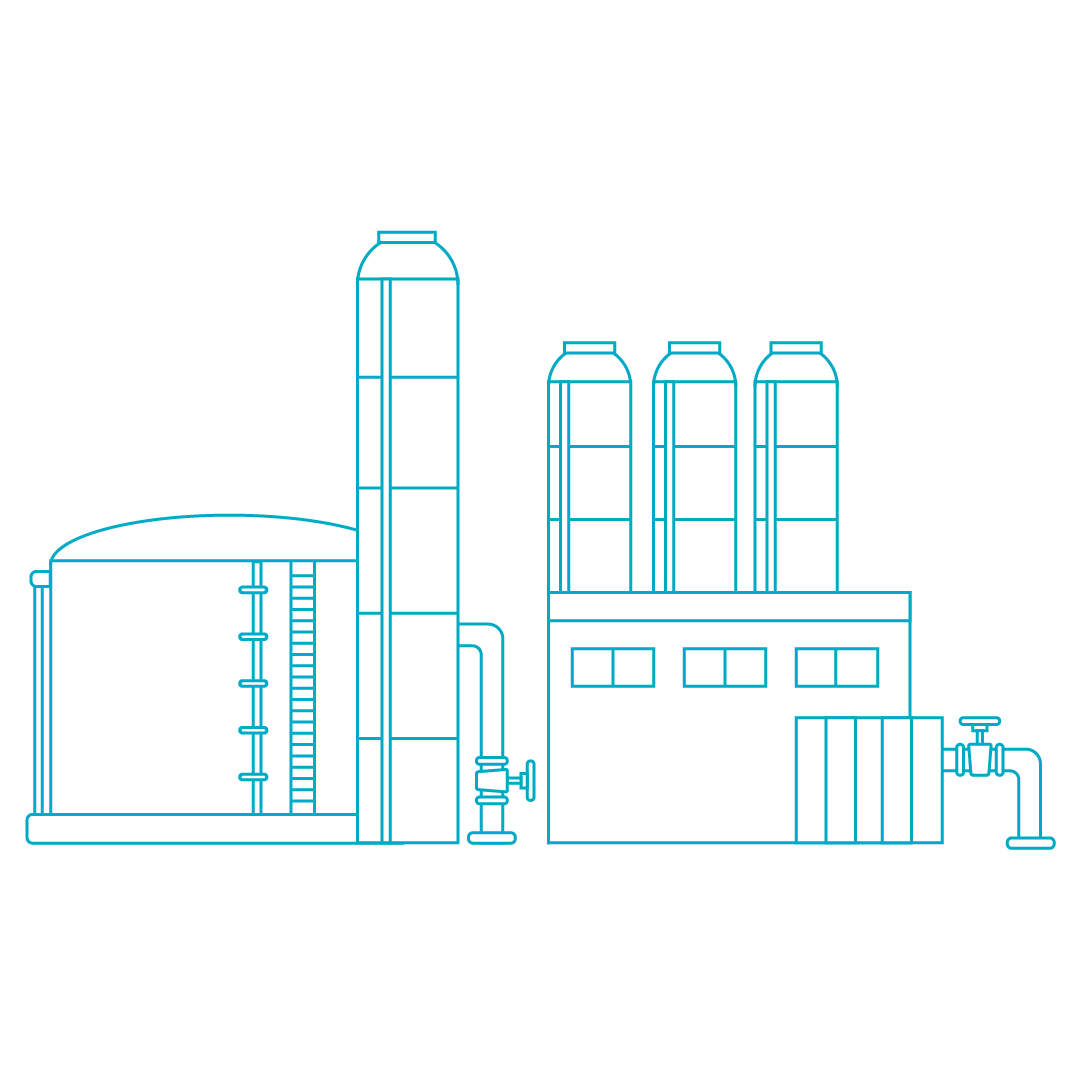
Liquefaction Facility
Gas is cooled to -160ºC to condense into 600 times less space

LNG Storage Tank
LNG is kept liquid in an insulated tank near atmospheric pressure until it can be loaded on a ship

LNG Carrier
LNG is kept liquid in insulated tanks near atmospheric pressure with no further cooling needed during transport

LNG Storage Tank
LNG is kept liquid in an insulated tank near atmospheric pressure until it is needed as a gas
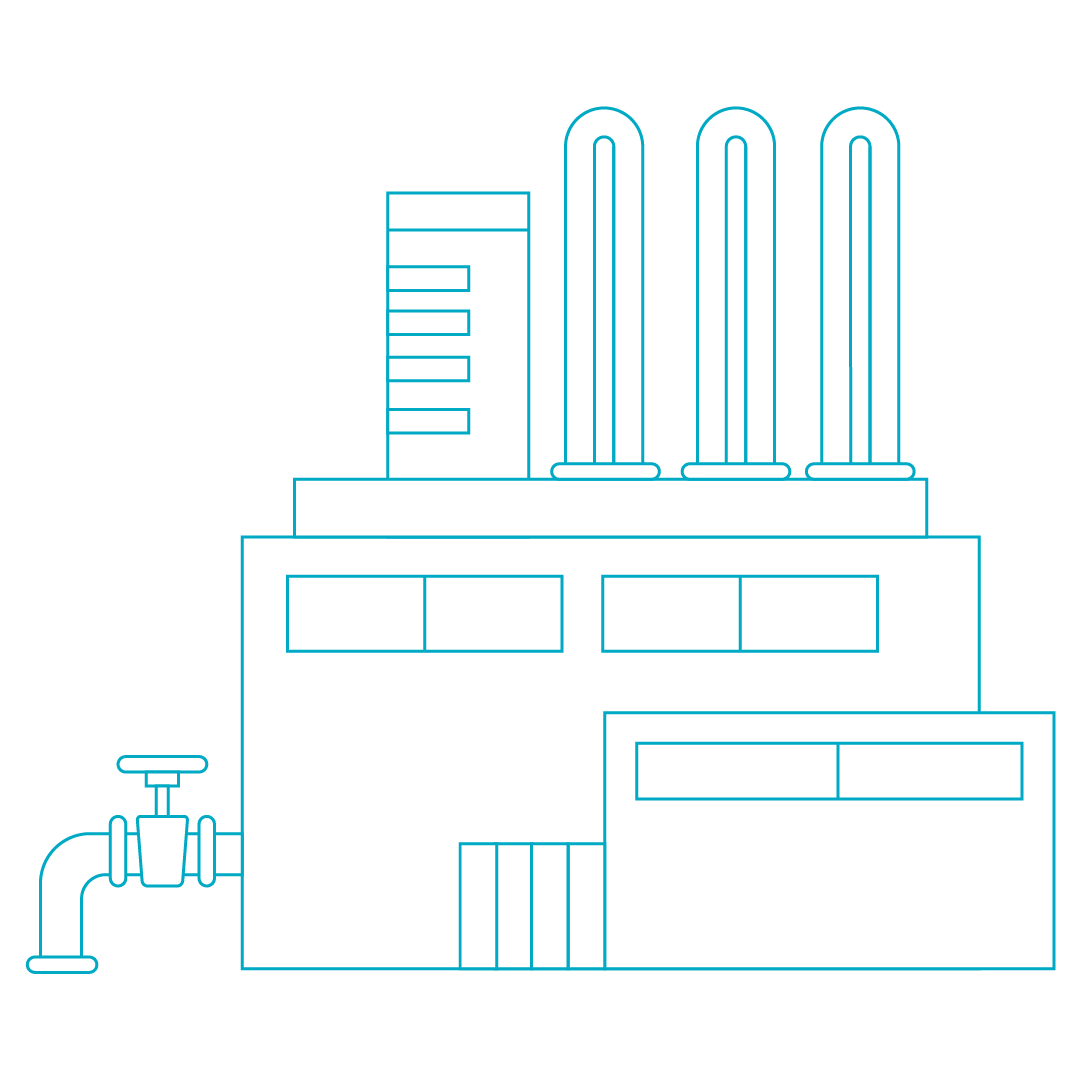
Regasification Facility
LNG is converted back to gas using a heat exchanger, in a process called regasification

Pipeline
Gas is transported from import terminals to population centres

End User
Gas is used to cook food, heat and cool homes, generate electricity, and power vehicles
LNG Carriers
In January 1959, the world’s first LNG carrier – aptly named the Methane Pioneer – transported approximately 5,090 cubic metres of LNG from Lake Charles, Louisiana to the United Kingdom.[24] Since then, LNG carriers have undergone a 50-fold increase in capacity – the largest LNG carrier today can transport 265,000 cubic metres of LNG.[25]
Both rectangular and spherical tanks are commonly used in LNG carriers today:
LNG carriers are designed and constructed with many safety features including insulated tanks and double hull structures. In the past 60 years of LNG carriage, there have been some minor LNG spills during cargo loading and unloading operations[26], but no incidents resulting in a spill of LNG from a ship while in transit have been reported.[27]
Other safety mechanisms to prevent LNG spills include:
- Overfill protection for cargo tanks to automatically stop loading when a certain level is reached.
- Overpressure protection valves on each tank to keep the tank at the ideal pressure throughout the voyage.
- Extensive safety procedures and training for safe operations.[28]
LNG Import and Export Terminals
LNG import and export terminals are located throughout the world, allowing ships to transport natural gas from regions where it is produced to regions where it is used.
As of 2018, there were 132 LNG import (regasification) terminals and 48 LNG export (liquefaction) terminals.[29] More terminals are in the planning and construction stages.
 Regasification (import) terminals
Regasification (import) terminals Liquefaction (export) terminals
Liquefaction (export) terminals
Safe Transport of LNG by Ship
If spilled, LNG is unlikely to contaminate water or soil as it will not have time to sink or be absorbed before returning to a gas.
In its liquid form, natural gas is not flammable, but if spilled, LNG will create a vapour cloud as the liquid rapidly reverts to a gas and mixes with oxygen. The colourless, odourless vapours can accumulate near the spill or drift over land or water, and be ignited by heat, sparks, flames, static electricity or other sources of ignition, given the right vapour mix of oxygen and gas.[30]
A spill from handling or transporting LNG could cause harm through:
- Suffocation due to vapour clouds displacing oxygen.
- Cryogenic (flash freezing) damage to people or infrastructure.
- Ignition of vapour cloud causing burns to people or infrastructure.
LNG spills are unlikely due to the many safety mechanisms in place to prevent spills, including:
- Protocols for safe operations – including training exercises, inspections, and certifications.
- Emergency shut-down system to halt LNG transfer for any reason.
- Emergency release couplings to protect against spills if the transfer mechanism detaches.
- Mooring quick-release hooks with built-in fail-safe features.
- Tethered tug assistance and local pilot(s) to bring LNG carriers into and away from the port.
- Enforced safety zones surrounding the LNG carrier to exclude other vessels while near or at the terminal.
- Travel restrictions when LNG carriers are near populated areas to transit during daylight hours and at a reduced speed.[31]
These precautions, along with regulations and safe handling methods, have proved effective in preventing LNG spills in the past.
Security concerns after the 9/11 terrorist attacks prompted studies that modelled the worst-case LNG spill scenario as being the result of a deliberate action (such as a terrorist attack). In the model of a worst-case scenario with a significant breach of LNG tanks, a “pool fire” could develop as spilled LNG pools on the ocean surface, begins evaporating, and ignites. This outcome requires natural gas to mix with air in a concentration of 5% to 15% by volume as well as a source of ignition. Although unlikely to occur, this scenario presents a risk of damage to equipment within 0.5 km and second-degree burns to skin within 1.5 km.[32] Depending on the proximity of the spill to land and the prevailing winds, a vapour fire could be pushed away from the spill and over land, potentially reaching up to 3 km.[33]
The following additional safety precautions can be used to prevent deliberate attacks:
- Crew security screenings.
- Ship and terminal security systems.
- Effective use of LNG carrier escort tugs and vessel exclusion zones near ports and terminals.
- Focused surveillance and searches.
- Emergency response coordination and communication with first responders and public safety officials.[34]
The vigilant application of regulations and safety precautions have resulted in the safe transportation of LNG for 60 years, with no spills of cargo from an LNG carrier in transit.[35]
Safety measures required at Canaport LNG at the Port of Saint John include:
- a security screening of the vessel crew by Transport Canada.
- tethered tug support.
- a safety exclusion zone of 0.5 nautical miles (925 m) around the LNG carrier while underway.
- no anchoring within 1.5 nautical miles (2.7 km) of the LNG carrier.
- no overtaking of the LNG carrier while underway in the harbour.
- a 0.3 nautical mile (620 m) radius from the centre of the terminal is off-limits to all marine traffic except tugs and service craft assisting the LNG carrier during LNG unloading operations.[36]
Regulations for LNG Transport by Ship
The safe transport of LNG by ship is governed by regulations at the international, national, provincial and municipal levels. These regulations provide consistent standards for the safe handling, storage, carriage and use of LNG by ships.
Transport Canada is responsible for implementing and enforcing international regulations through the Marine Transportation Security Regulations and Transportation of Dangerous Goods Regulations. LNG carriers, like other foreign ships calling on Canadian ports, receive regular Port State Control inspections to ensure compliance with regulations.
An international safety management code became mandatory for all gas carriers on international voyages as of July 1998.[39] This code protects against safety and pollution risks involved in ship operations. Additionally, under the International Ship and Port Facility Security Code, ports, LNG terminals and LNG carriers are required to have an approved security plan and designated security officers prior to operation.[40]
LNG import and export facilities are classified as industrial sites in Canada and are subject to federal, provincial and municipal standards, codes and safety regulations. These regulations are regularly updated to ensure that the health, safety and security of the Canadian public and environment are protected. The Canadian Standards Association has a specific standard for LNG production, storage and handling to ensure the safe operation of LNG facilities in Canada.[41]
While the preventive measures to avert a spill are well developed, regulations for compensation for damage caused by an LNG spill are not fully established. For the purposes of liability and compensation, LNG is considered a Hazardous and Noxious Substance (HNS). The International Maritime Organization’s 2010 HNS Protocol – ratified by Canada but not yet in force – is based on the successful model devised to address pollution damage from oil spills, known as the Polluter Pays model.
LNG as a Marine Fuel
Recent commitments by the International Maritime Organization to reduce the marine shipping industry’s sulphur oxide and nitrogen oxide emissions has intensified the search for cleaner fuels. LNG as a marine fuel is seen as a positive move for cleaner air.[42]
In Canada, fuelling ships with LNG has increased rapidly in recent years, particularly among ferries and domestic cargo vessels, due to stricter regulations to prevent air pollution. New technologies to recover natural gas have created a gas surplus in North America. LNG’s lower emissions profile, increased availability, and competitive cost have made it an attractive option for ship operators in Canadian waters.
As of May 2018, the world fleet included approximately 120 vessels equipped to use LNG as a fuel, with another 132 vessels on order.[43] Many new-built ships have dual-fuel engines to allow operators to use either LNG or oil, with LNG used as the main fuel and oil used as the ignition fuel, and some existing vessels have been outfitted for LNG fuel with new engines and larger storage tanks.

The Global Marine Fuel Market
Although the infrastructure required to support widespread use of LNG as a marine fuel is currently a limiting factor in adopting its use, ports that provide marine fuelling services around the world are in the process of developing or expanding capacity for LNG fuelling. The majority of such ports are expected to offer LNG as a marine fuel in the near future, with many LNG fuelling facilities in Europe and Asia already in operation.[45]
Early adopters of LNG as a marine fuel include ferries and cruise ships, as these vessels operate near shore and often within Emission Control Areas where sulphur oxide emissions are limited to 0.1% of fuel burned. Lacking traditional fuelling infrastructure (such as barges and jetties) for LNG fuelling, many vessels receive LNG delivered by truck.
LNG’s share of the global marine fuel market is expected to grow substantially after 2020.[46]
Initiatives Underway
Select initiatives underway to incorporate LNG into Canada’s marine shipping industry include:
BC Ferries currently operates five LNG powered ferries providing significant savings in fuel costs and emissions. LNG is approximately half the cost of ultra-low sulphur marine diesel, and the annual emissions reductions for one ferry are estimated at 9,000 tonnes of CO2 equivalent or eliminating 1,900 passenger vehicles from the road.
![]()
FortisBC provides LNG for the West Coast marine industry with truck-to-ship onboard LNG fuelling. LNG is trucked from the Tilbury LNG plant to BC freight and passenger ferries. FortisBC has been performing approximately a dozen onboard marine fuelling operations a week since December 2016.

Groupe Desgagnés has added five dual-fuel product carriers to its fleet operating in the Great Lakes and St. Lawrence, Atlantic and Arctic waters. The ships can run on LNG, heavy fuel oil or marine diesel and are double hulled and built for safe navigation in Arctic waters.

With the support of the BC government and the Snuneymuxw First Nation, Seaspan Ferries commissioned two new dual-fuel vessels in April 2017 to bring its fleet to seven vessels. The new vessels can use either LNG or diesel fuel and have battery back-up power.

Canada has been preparing for the use of LNG as a marine fuel for some time. Starting in 2013, Transport Canada commissioned reports to assess the LNG supply chain on Canada’s West Coast and also the Great Lakes and East Coast. In 2017, Transport Canada issued interim Requirements for Vessels Using Natural Gas as Fuel. New vessel construction and equipment regulations are expected to be released in the future. These requirements include guidelines for safe LNG fuelling operations.
![]()
About Clear Seas
Clear Seas is a Canadian not-for-profit organization that provides independent fact-based information to enable governments, industry, and the public to make informed decisions on marine shipping issues. We work to build awareness and trust so that all people can feel a part of the marine sector. Our vision is a sustainable marine shipping sector that is safe, vibrant, and inclusive, both now and for future generations.
As an independent research centre, Clear Seas operates at arm’s length from our funders. Our research agenda is defined internally in response to current issues, reviewed by our research advisory committee, and approved by our board of directors.
Our board of directors is composed of mariners, scientists, community leaders, engineers and industry executives with decades of experience investigating human, environmental and economic issues related to our oceans, coastlines and waterways.
Our reports and findings are available to the public at clearseas.org/en
Natural gas extraction requires drilling – either vertically or horizontally – and often hydraulic fracturing (fracking) to reach the gas deep underground and bring it to the surface. New technologies have made natural gas reservoirs easier to access, resulting in increased production and lower costs.
Natural gas has been found and produced in almost all areas of Canada but most production today occurs in Western Canada. The process of extracting natural gas includes:
- Exploration, licensing and permitting
- Site preparation and well construction
- Horizontal or vertical drilling deep underground
- Stimulation (such as fracking) to enable gas to flow into the well
- Well operation to collect natural gas for 10 to 30 years
- Well closure and land reclamation[2]
The city of Boston in the United States is one example of an LNG import terminal located in a densely populated area. To balance the demand for natural gas against the risk of harm to people in the area, numerous safeguards are in place to reduce the likelihood of a serious incident – either accidental or intentional – involving LNG.[37]
Four days before arrival: the LNG carrier provides its manifest and crew list to the US Coast Guard for background checks.
At 48, 24, 12, and 5 hours outside Boston Harbor: the LNG carrier checks in with the US Coast Guard.
6-12 miles outside Boston Harbor: US Coast Guard officers board the LNG carrier to perform safety checks and watch for potentially threatening vessels coming within a 500-yard (457-metre) radius.
5 miles outside Boston Harbor: if it is a clear day with good visibility, a local pilot boards the vessel and guides the ship in at a maximum speed of 10 knots (18.5 km/h).
As the vessel passes, the bridge is closed to all traffic and flights from nearby Logan airport are re-routed or rescheduled.
Four tugs meet the LNG carrier and tether to it to help maneuver in the case of an emergency. Law enforcement boats – US Coast Guard, city and state police, and state environmental police – encircle the LNG carrier to enforce safety zones as the vessel reaches the berth and prepares to unload its cargo. A helicopter keeps watch from above.
The estimated cost to taxpayers: approximately US$100,000 per transit.[38]
For LNG as a marine cargo, the International Code for the Construction and Equipment of Ships Carrying Liquefied Gases in Bulk (IGC Code) applies to gas carriers constructed on or after 1 July 1986. Revised in 2016, the code prescribes the design and construction standards of ships and their equipment to minimize the risk to the ship, its crew and to the environment.
For LNG as a marine fuel, the International Code of Safety for Ships using Gases or Other Low-flashpoint Fuels (IGF Code) entered into force on 1 January 2017 to minimize the risk to ships, their crews and the environment when using gas fuels, with provisions for the arrangement, installation, control and monitoring of machinery, equipment and systems using low-flashpoint fuels.
The LNG industry is also subject to broader shipping regulations and conventions such as Safety of Life at Sea (SOLAS), Prevention of Pollution from Ships (MARPOL), the International Safety Management code, and the International Ship and Port Security Code administered by the International Maritime Organization.
LNG carriers also follow standards established by the Society of International Gas Tanker and Terminal Operators, the International Association of Oil & Gas Producers, GPA Midstream Association, and the National Fire Protection Association.
Before a ship can switch to use LNG as a fuel, a number of steps are required:
- Studying the feasibility of conversion, given the age, condition, and structure of the ship;
- Identifying shipyards capable and available to undertake the conversion;
- Installing new engines, auxiliary engines, and fuel tanks for LNG;
- Testing and inspections for quality assurance and to confirm all classification society requirements are met;
- Undertaking sea trials to ensure the ship is fully functional;
- Training the crew for safe and efficient use of a new fuel type.[44]
Sources & Citations
- Natural Resources Canada. (2015). Natural Gas: A Primer. Government of Canada.
- Natural Resources Canada. (2016). Exploration and Production of Shale and Tight Resources. Government of Canada.
- Natural Resources Canada. (2013). Liquefied Natural Gas: Properties and Reliability. Government of Canada.
- Atmospheric pressure is the force per unit area exerted against a surface by the weight of the air above that surface. LNG pressure is typically 25 kilopascals or 3.6 pounds per square inch. As a comparison, air pressure at sea level is 101 kilopascals or 14.7 pounds per square inch.
- Natural Resources Canada. (2013). Liquefied Natural Gas: Properties and Reliability. Government of Canada.
- International Gas Union. (2018). Global Gas Report 2018. Proceedings: 27th World Gas Conference. p. 21.
- Speirs J., Balcombe P., Blomerus P., Stettler M., Brandon N., and Hawkes A. Can Natural Gas Reduce Emissions from Transport? Heavy goods vehicles and shipping. Sustainable Gas Institute, Imperial College London. p. 60.
- Speirs J., Balcombe P., Blomerus P., Stettler M., Brandon N., and Hawkes A. Can Natural Gas Reduce Emissions from Transport? Heavy goods vehicles and shipping. Sustainable Gas Institute, Imperial College London. p. 60.
- (S&T) Squared Consultants Inc. (2019). GHGenius: Lifecycle Analysis Model for Transportation Fuels in Canada. GHGenius is a mathematical model that predicts the amount of greenhouse gas emitted by different fuels across their entire lifecycle. The lifecycle of a fuel includes each step in the process, from raw material acquisition to processing to end-use. The values cited here compare the full lifecycle assessment of LNG with that of conventional fuels (coal, heavy fuel oil, diesel, and gasoline) using the GHGenius model.
- Speirs J., Balcombe P., Blomerus P., Stettler M., Brandon N., and Hawkes A. Can Natural Gas Reduce Emissions from Transport? Heavy goods vehicles and shipping. Sustainable Gas Institute, Imperial College London. p. 60.
- Energy Information Administration. (2018). How Much Carbon Dioxide is Produced When Different Fuels are Burned? U.S. Government.
- Environmental Protection Agency. (2018). Overview of Greenhouse Gases. U.S. Government. Carbon Dioxide.
- Intergovernmental Panel on Climate Change. (2007). Working Group 1: The Physical Science Basis. IPCC Fourth Assessment Report: Climate Change 2007. Table TS.2.
- Speirs J., Balcombe P., Blomerus P., Stettler M., Brandon N., and Hawkes A. Can Natural Gas Reduce Emissions from Transport? Heavy goods vehicles and shipping. Sustainable Gas Institute, Imperial College London. p. 54.
- Brynolf, S., Andersson, K. & Fridell, E. (2011). A comparative life cycle assessment of marine fuels. Proceedings of the Institution of Mechanical Engineers Part M-Journal of Engineering for the Maritime Environment. 225. 97-110.
- Natural Resources Canada. (2018). Natural Gas Facts. Government of Canada.
- Natural Resources Canada. (2018). Natural Gas Facts. Government of Canada.
- Natural Resources Canada. (2018). Canadian LNG Projects. Government of Canada.
- FortisBC. (2019). FortisBC secures first export contract for Tilbury LNG facility. Media release.
- International Gas Union. (2019). World LNG Report. p. 7.
- Natural Resources Canada. (2015). How Much Natural Gas is Required to Heat a New Average-Sized Single Detached Home? Government of Canada.
- Statistics Canada. (2018). Canada at a Glance 2018. Government of Canada. Population, Table 4.
- Natural Resources Canada. (2018). LNG Supply Chain. Government of Canada.
- Natural Resources Canada. (2013). Liquefied Natural Gas: Properties and Reliability. Government of Canada. LNG Operations: History and Reliability.
- Vard Marine. (2018). Emergency Towing Vessel Needs Assessment. Clear Seas Centre for Responsible Marine Shipping. p. 12.
- LNG spills in port during loading and unloading operations typically involve a small amount of LNG. Such incidents are rare due to the strict procedures and equipment safeguards in place to limit the risk of a spill due to human error (such as overfilling tanks). On the ship, LNG cargo containment systems with double-walled insulated tanks and leak detection systems have proven successful to date in preventing small leaks from becoming larger leaks that reach beyond the confines of the ship.
- Denmark. (2007). Formal Safety Assessment – Liquefied Natural Gas (LNG) Carriers. International Maritime Organization – Maritime Safety Committee, 83rd Session. p. 17-22, 54-83, 93-94.
- Denmark. (2007). Formal Safety Assessment – Liquefied Natural Gas (LNG) Carriers. International Maritime Organization – Maritime Safety Committee, 83rd Session. p. 98-101.
- International Gas Union. (2019). World LNG Report. p. 97-105.
- Natural Resources Canada. (2013). Liquefied Natural Gas: Properties and Reliability. Government of Canada. p. 1.
- Society of International Gas Tankers and Terminal Operators. (2019). SIGTTO Publications.
- Luketa, A., Hightower, M.M. and Attaway, S. (2008). Breach and Safety Analysis of Spills Over Water from Large Liquefied Natural Gas Carriers. Sandia National Laboratories. p. 16-19.
- Luketa, A., Hightower, M.M. and Attaway, S. (2008). Breach and Safety Analysis of Spills Over Water from Large Liquefied Natural Gas Carriers. Sandia National Laboratories. p. 20-21.
- Luketa, A., Hightower, M.M. and Attaway, S. (2008). Breach and Safety Analysis of Spills Over Water from Large Liquefied Natural Gas Carriers. Sandia National Laboratories. p. 22.
- Denmark. (2007). Formal Safety Assessment – Liquefied Natural Gas (LNG) Carriers. International Maritime Organization – Maritime Safety Committee, 83rd Session. p. 17-22, 54-83, 93-94.
- Saint John Port Authority. (2015). Practices and Procedures. p. 9-10, 13-17, 36.
- Schwartz, J. (2010). Safe Harbor? Boston Magazine.
- Whitney, G. and Behrens, C.E. (2010). Energy: Natural Gas. Government Series from TheCapitol.Net. p. 470.
- Transport Canada. (2011). International Safety Management (ISM) Code. Government of Canada.
- Natural Resources Canada. (2013). Liquefied Natural Gas: Properties and Reliability. Government of Canada. LNG Regulations, Standards and Codes.
- Natural Resources Canada. (2018). Canadian LNG Projects. Government of Canada. LNG Facilities and Safety Regulations.
- Speirs J., Balcombe P., Blomerus P., Stettler M., Brandon N., and Hawkes A. Can Natural Gas Reduce Emissions from Transport? Heavy goods vehicles and shipping. Sustainable Gas Institute, Imperial College London. p. 60.
- Corkhill, M. (2018). Big Boys Join the LNG-Fuelled Fleet. LNG World Shipping.
- Karlsson, S. et al. (2012). LNG Conversions for Marine Installations. Wartsila Technical Journal.
- Parfomak, P.W., Frittelli, J., Lattanzio, R.K. and Ratner, M. (2019). LNG as a Maritime Fuel: Prospects and Policy. Congressional Research Service. p. 10-14.
- U.S. Energy Information Administration. (2019). Annual Energy Outlook 2019 with Projections to 2050. US Government. p. 42.
- Gordon, J. (2018). Marine Shipping Sector Eyes LNG to Meet Clean Fuel Rules. Reuters. Washington.
- This equates to approximately 240 tonnes of greenhouse gas emissions compared with 355 tonnes from a diesel equivalent (93,550 gCO2e/GJ).

